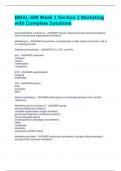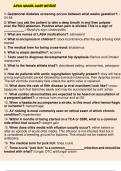Samenvatting
Summary Methodology Marketing & Strategic Management (Full package)
- Instelling
- Radboud Universiteit Nijmegen (RU)
This document includes comprehensive information for the exam, covering all lecture notes and SPSS output. in 2024, I achieved an 8 using these notes, and I believe they will greatly help you achieve a great result as well!
[Meer zien]











